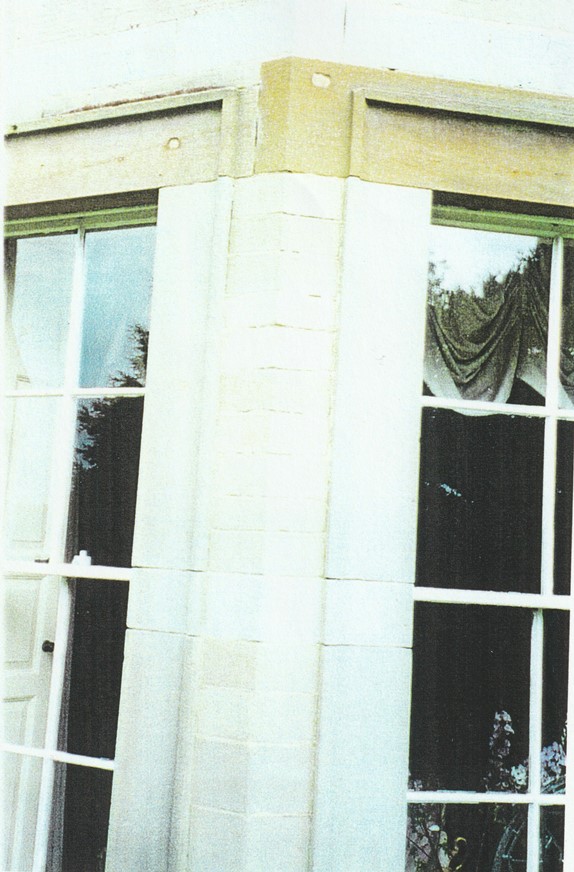
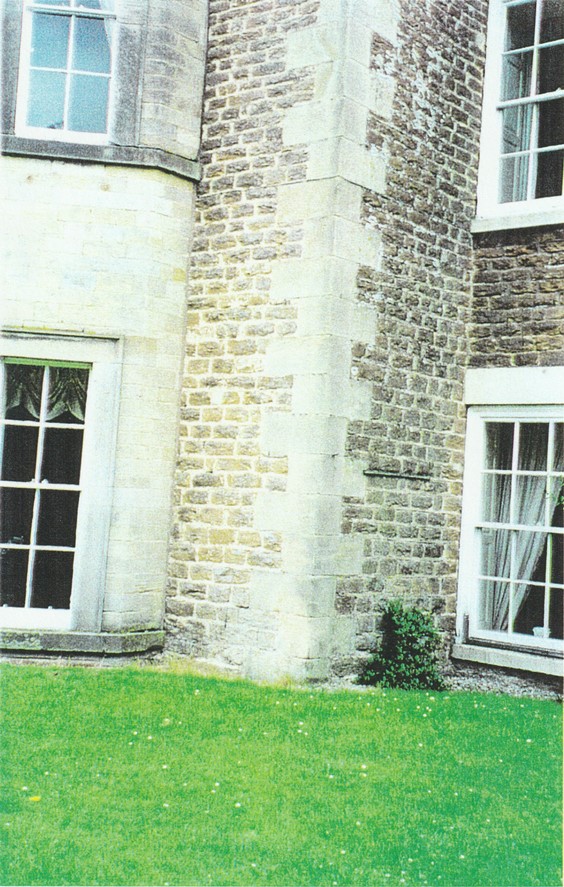

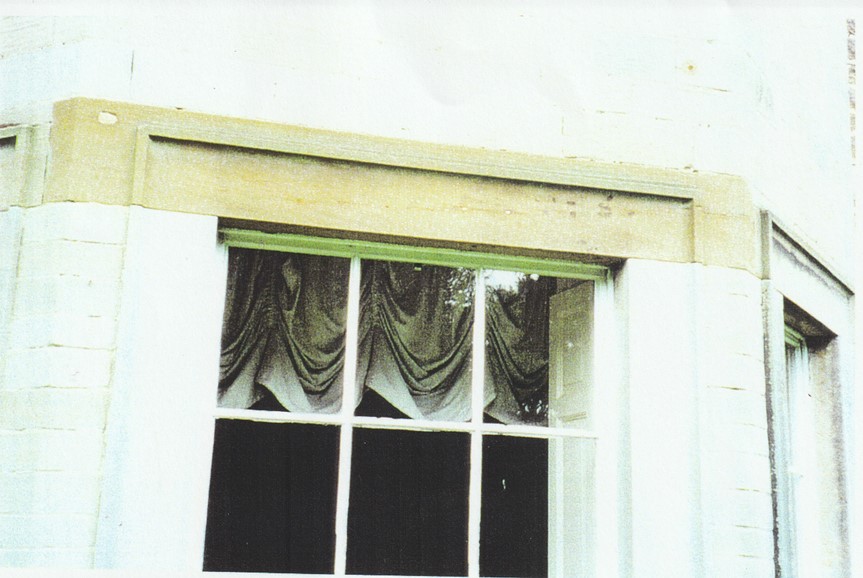
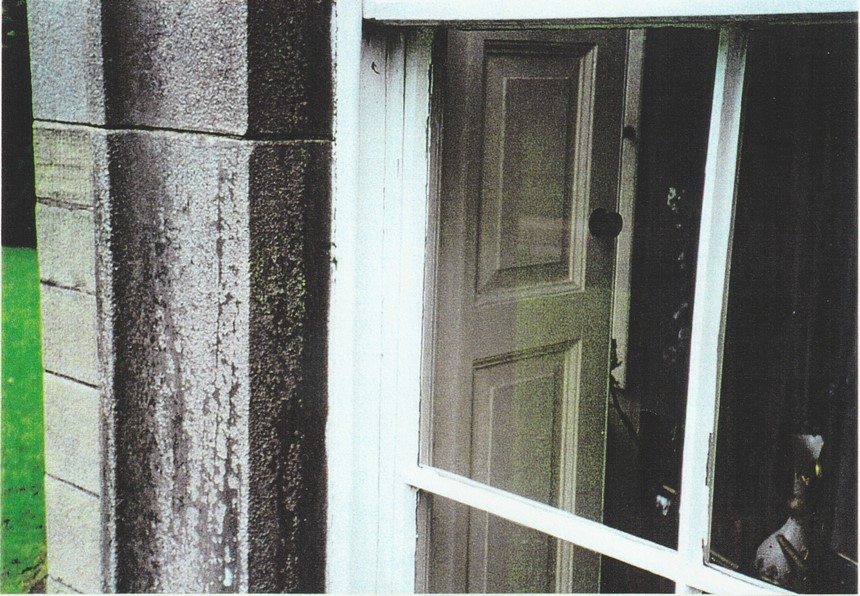
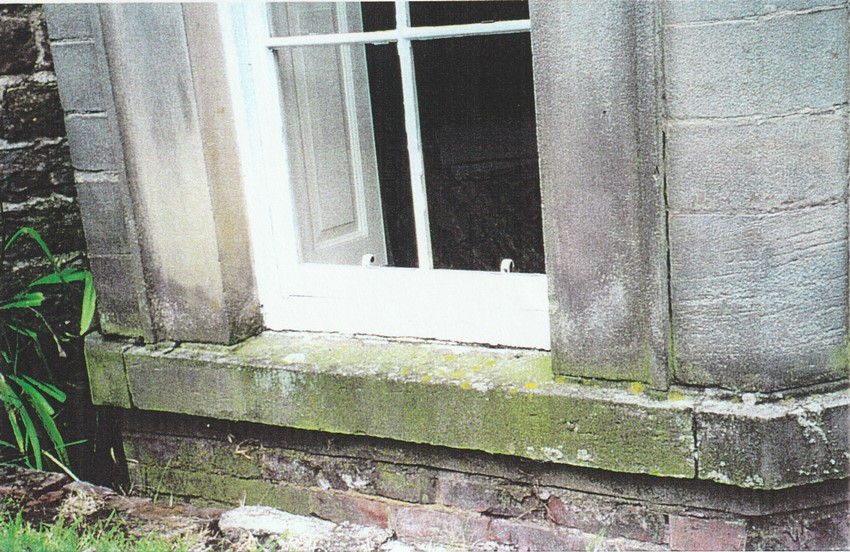
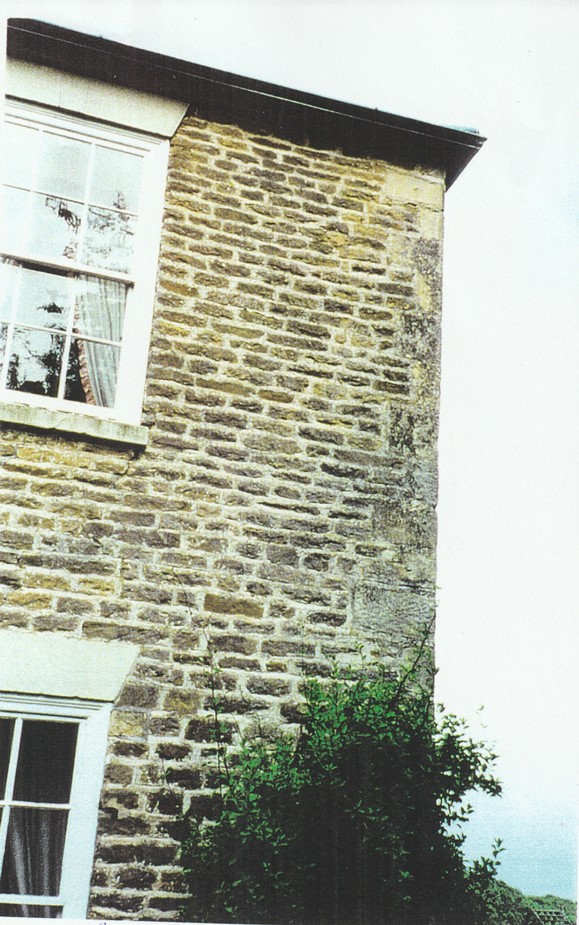
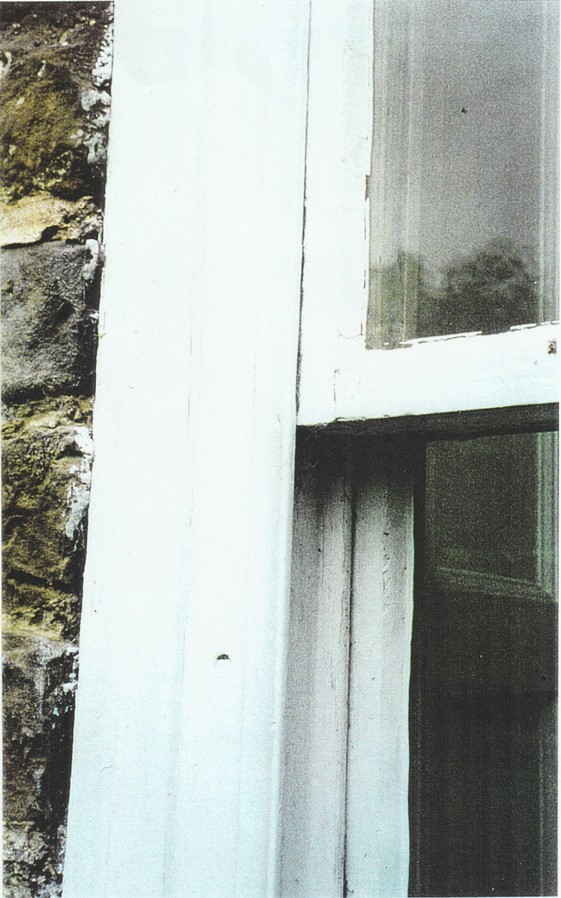
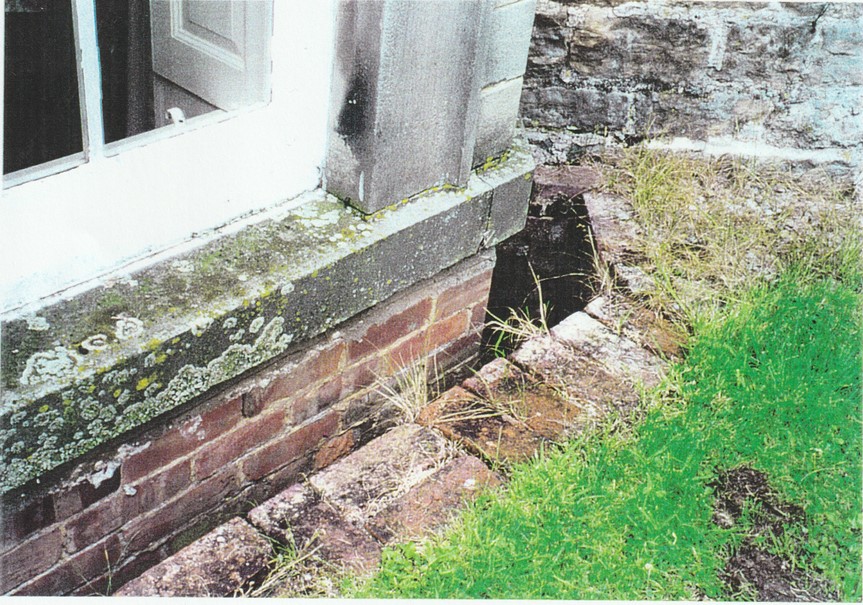
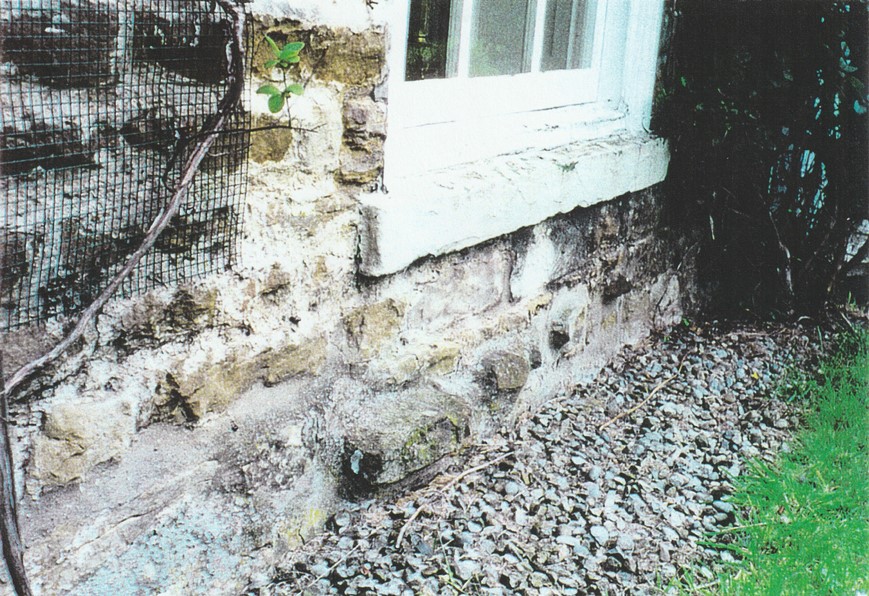
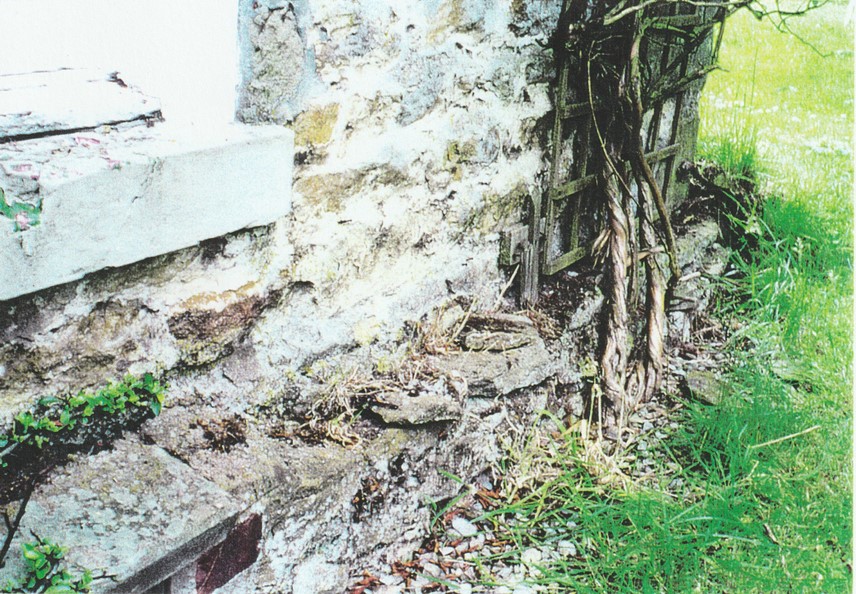
September 2000
Acknowledgements:
I would like to thank the librarians and archivists of the following institutions:
Kew, Richmond, Surrey, Public Record Office, Reader Information Services
Leeds, West Yorkshire Archive Service, Chapeltown Road, Sheepscar LS7 3AP London, The British Architectural Library, 66 Portland Place
Northallerton, North Yorkshire County Record Office, Malpas Road D17 8TB
Oxford, the Bodleian Library
Sheffield, Sheffield Archives, 52 Shoreham Street S1 4SP
Swindon, National Monuments Record Centre
York, Borthwick Institute of Historical Research, YO1 7PW (abbreviated BI)
York, City Archives, Art Gallery Building, YO1 7EW
York, the Central Library, Museum Street
I do not give a separate bibliography, as all works referred to are given in full on the first occurrence, with abbreviations as used later.
The descent of ownership of the manor of Wiganthorpe is particularly interesting because for the most part it does not concern the great families like the Howards of Castle Howard or the lesser aristocracy of the Lascelles of Harewood House or the Worsleys of Hovingham, but for over two hundred years the merchant venturers and aldermen of the City of York. Considerable light is thrown upon the marriage links between these merchant families of York and the way land and property circulated among them from the mid-seventeenth century into the nineteenth and twentieth centuries (see especially Dugdale Visitation of York ed. JW Clay Exeter 1899-19 17, hereafter Dugdale ; J Foster Pedigrees of the County Families of York. 3 vols. London 1874, hereafter Foster; RH Skaife Catalogue of Mayors, ... etc. of the City of York 1895, hereafter Skaife; Burke Landed Gentry 18th ed., hereafter Burke. Where Dugdale, Foster or Skaife differ from Burke, I have followed Burke).
The ownership of Wiganthorpe Hall in the earliest years is recorded in the Victoria County History Yorkshire N. Riding, vols. i. and ii (VCH Yorks NR i. and ii) There are three entries in the Domesday Survey referring to WIGGANTHORPE. The 'manor' and a carucate were in the hands of the king, the former tenant having been Cnut (VCH Yorks NR ii, 202, 312); the Count of Mortain held 1 carucate (ibid. 222, 312) and Berenger de Toni also held another, once Gamel's (ibid. 242, 312). The overlordship eventually passed to the Luttrells (VCH Yorks NR. ii, 204).
In the time of Henry HI lands in Wigganthorpe were held by Anketin Mallory, descending to his son Nicholas, who died before 1275, his heirs being his four sisters. In 1289, Nicholas de Stapleton, lord of Stapleton, came into possession of Wigganthorpe, followed by Miles de Stapleton who was there in 1304. (VCH Yorks NR. ii, 204, 205). At some point in the latter part of the sixteenth century the manor of Wiganthorpe was sold by the de Stapletons and acquired by the Methams of Metham (ibid.). The Methams were linked to the Stapletons by marriage in the fourteenth century, when Sir Thomas de Metham married Elizabeth, one of the sisters and heirs to Thomas de Stapleton. According to VCH Yorks NR i, 167: 'In 1373-4 the escheator had orders to deliver the manor of Stapleton 'with appurtenances in the wills of Dalton Ryall and Melsonby' to Sir Thomas de Metham kt. and Elizabeth his wife The Methams of Metham held Stapleton until 1585 when Thomas Metham conveyed it to George Pudsey'.
The will of Francis Metham (second son of Sir Thomas de Metham of Wiganthorpe) dated 24th October 1595 and proved 2nd Septr. 1596 has been printed by the Yorkshire Archaeological Journal viii, 367ff. and gives us our first insight into the construction of Wiganthorpe Hall:
'I give and bequeath unto my welbeloved nephew Thomas Metham of Metham, Esquier all those parcells belonginge to the house of Wigginthorpe, viz. All the wainscot, and seelinge in the hail and in both the parlors the glasse in all the wyndowes in and about the house with all the doores, lockes, and kaies, and all frames and shelves fastened vnto the walles, or ground. All the brewinge vessellys theire stande now in the brewhouse, all the stable hecks, mangers, and hayes withall the Oxestalls and heckes together withall the pales and rayles about the house and all the stoopes and rayles of stacke garthes in the groundes.'
The building appears to be a single storey hall-house with two parlours - impressive with glass in the windows and paneling of walls and ceiling but possibly unfashionable at that date (1596). It could have been a stone building, as there is a sandstone quarry in Terrington, which is obviously a 'stone' area.
Further details in the will indicate that Francis Metham was a landowner of some considerable wealth. His heir was his nephew Thomas Metham 'Esquier' - a form of address, which ranked him higher than a 'gentleman'. The next heir was Sir Jordan Metham who was at Wiganthorpe in 1616, when his eldest son was baptised. In turn Sir Jordan was succeeded by his younger son George, who, in 1654, conveyed the manor to Stephen Watson and John Micklethwaite (VCH Yorks NR ii, 205). It is at this point that the manor of Wiganthorpe passes from the great families of the north (the de Stapletons and the de Methams) to the families of prosperous York merchants. According to Aveling (Hugh Aveling OSB, Northern Catholics ... 1558-1790 London 1966, 103) the Methams had to sell most of Wiganthorpe voluntarily as a result of sequestrations, being a family (for the most part) of obstinate Catholics' - the Terrington Parish Register (Terr. Par. Reg.) records that, in 1632, Jordan Metham excused himself from drinking the communion wine on the grounds that it was undrinkable because it arrived in the parish in beer bottles! Sir George Metham of Metham (the younger son of Sir Jordan Metham) had married Katherine, the daughter of Thomas, 2nd Viscount Fairfax. From his will (dated 1669, probate 1672: BI) it is clear that he remained a Catholic, as the will is headed in the Catholic style: Jesus. Maria. Joseph. and 'Item I doe giue and bequeath sixty pounds for my funerall chardges and to such pious use to vertuous good men to pray for my soule ...' His legacies amounted to £2000.
The Micklethwaites were a family of some substance in York. Elias Micklethwaite was an alderman of the City of York who had links with Puritan clergy (VCH City of York, 202). John Geldart (born 1596, died 1658/9, son of Richard Geldart, butcher, of York) who, after Watson and Micklethwaite, became the next owner of Wiganthorpe, was MP in1656 and raised to the aldermanic bench in the City of York when the Royalists were displaced in 1645 (ibid.). He was Lord Mayor of the City of York in 1645 and 1654. He married Tabitha, daughter of Alderman Elias Micklethwaite in 1630 as his first wife. (His second wife was Alice Twistleton, of Barlow in the county of York, sister of Sir John Twistleton Bt., of Dartford, Kent, of Sir Philip Twistleton, and of Mr. Thomas Twistleton. She became known as Dame Alice Geldart, will dated 14th June 1667, probate July 1667 - demonstrating the upward social movement of merchant class into titled class). Tabitha was born in 1604 and died in 1638 (Skaife, 293, 294, 296). Their son was John Geldart of Wiganthorpe (born 1630-31 and died 1677), Wiganthorpe could have been transferred from the Micklethwaites to the Geldarts either by marriage settlement or purchase. Skaife (ibid. 296) records a different transfer of property between the two families: '15 Feb:- 23 Charles I . Mary Geldart, of York, widow, John Geldart, the elder, of the same city, alderman, and John Geldart, the younger, of the same city, son and heir of Roger Geldart dec., convey to Stephen Watson, alderman, and Joseph Micklethwaite, Esq., of York, their heirs and assigns for ever, - a close of meadow at Acomb, heretofore in the several tenures of Richard Geldart, Robert Geldart, and Robert Skadlocke, ... , and now in the occupation of Robert Burdas, or of his assigns.'
During the vaguely defined period of the Great Rebuilding (from somewhere in the sixteenth century to somewhere in the eighteenth century), Wiganthorpe Hall was rebuilt, the old hall-house of 1596 greatly extended. Which family was responsible? It seems unlikely to have been the Methams, who were eventually impoverished by sequestrations. The Geldarts, on the other hand, were both buyers and builders. John Geldart senior is known to have built a fine house at Askham Bryan of which he was lord of the manor (Skaife, 294). His son, also John Geldart (died 1677) a man of property and culture - he left his library of books to his son Robert (see his will: BI)inherited the manor of Askam Bryan from his father, and probably also the manor of Wiganthorpe. Although I have not found the name of John Geldart senior associated directly with Wiganthorpe, the words in his son's will (dated 24th April 1675: BI) strongly suggest that the inheritance came from father to son: 'Item: I ratify & confirm my Dear Brother Joseph Geldart's Anuity, promised upon my fathers Death Bed, wch I appoint & ordain him out of my lands in Wigginthorpe Lordship During his naturall life as followeth...'
I have found no further references to this Joseph Geldart. The reference in the Terrington Parish Register which reads 'Mr. Joseph Geldart was buryed March ye 19th 1698' is generally taken to refer to the Joseph Geldart 'son of Mr. John Geldart' who was baptised on the 12th of June 1673 (ibid.), but we know from Sarah (nee Hitch, Geldart by her first marriage) Breary's renunciation, dated 'this Eighth day of December 1702' (BI) after her marriage to Samuel Breaiy following the death of John Geldart in 1677, of her rights and claims on Wiganthorpe after the death of her son Joseph Geldart, that he did not die at Wiganthorpe. She describes him as 'dying in remote parts beyond the Seas' (BI). Perhaps the Joseph Geldart who was buried at Terrington in 1698 was this younger brother of John Geldart whose father was so careful for his welfare and about whom we know no more at present. Sarah Breary was buried Jan. 1st 1705 (Terr. Par. Reg.).
The Hearth Tax Returns for 1664 in the Terrington parish (published by the Ripon Historical Society and Ripon, Harrogate & District Family History Society 1991, ed. John Hebden) cite Mr Jo Geldart as having 9 hearths; in the returns for 1673 Mr. Jo Geldart has 11 hearths. These returns probably refer to Wiganthorpe, which is in the parish of Terrington, rather than any additional property in Terrington itself, as John Geldart makes no mention of any houses in Terrington in his will, dated 1675, probate 1677 (BI). On the other hand, in addition to his lands and messuages and tenements at Wiganthorpe, he refers to 'all the houses and lands lying in the township of Askham Bryan that belong unto mee ...'. The 1672 Hearth Tax Returns for Askham Bryan list 'Mr. John Geldart 12'. In every case John Geldart's hearths greatly exceed all others in these parishes.
John Geldart's 'sole heir of Wigginthorpe and Askham Bryan' was his son Robert (as set out in his will: BI). Robert was at Wiganthorpe in 1702 when his mother Sarah Breaty renounced all her claims on Wiganthorpe which would have come to her upon the death of her younger son Joseph 'dying in remote parts beyond the Seas' and handed the administration thereof to Robert Geldart Esq. 'Brother of the said deseased'. The document is signed and dated 'this eighth day of December 1702' (BI), see above.
John Geldart's will also points to the continued association between the Geldarts and the Micklethwaites: 'I earnestly desire my Cousin Elias Micklethwait Junior to take care of him (i.e. his son Robert) in his Education. This would be the Elias Micklethwaite who was the rector of Terrington and died in 1721
In the absence of male heirs, the descent in ownership of Wiganthorpe and Askham Bryan passed to Mary Geldart, daughter of John Geldart and sister of Robert and Joseph. She was baptised in 1667 (Terr. Par. Reg.). She married Richard T(h)omlinson of Thorgamby at Upper Helmsley on 19th December 1689. He was baptised in 1661 and died in 1742, on the 17th December, at Wiganthorpe (Terr. Par. Reg.). Their daughter Mary was born in 1691 and baptised at Brayton on 3rd December 1691. On November 27th 1727 she married Chas. Ellis of Rowsell at Brayton. During these years, when Mary Geldart T(h)omlinson and her daughter were presumeably living with their husbands either at Brayton or at Rowsell, Wiganthorpe appears to have had as its tenants Lewis and Jane Elstob and their two young daughters. Jane Elstob died in 1724 and is buried in Beaconsfield; Lewis Elstob died in 1733 at Wiganthorpe (Terr. Par. Reg.) The Elstobs appear to have been a Durham family. The Geldarts returned to Wiganthorpe in the persons of Richard T(h)omlinson, widower of Mary Geldart, and his daughter, Mary (Geldart T(h)omlinson) Ellis. He died in 1742 at Wiganthorpe, see above; she died at Wiganthorpe in 1768, will dated 1766 (BI).
Mary Ellis named William Weddell (also occasionally spelt Weddall) of Newby in her will (BI) as her principal heir, inheriting the manors of Wiganthorpe and Askham Bryan. They were related through her father Richard T(h)omlinson who was the elder brother of Joseph, who married Dorothy Weddell, daughter of William Weddell Esq. of Earswick and Margaret, daughter of Sir William Robinson of Newby, great-grand parents of William Weddell of Newby (genealogy courtesy of REJ Compton Esq. of Newby Hall). There had been an earlier link between the Geldarts and the Weddells when Grace Geldart, daughter of Richard Geldart and sister of John Geldart senior, married John Weddell of York, son of Robert Weddell of York, brother of Leonard Weddell (died 1602) from whom William Weddell of Newby was descended. She died in1654; he died in 1621.
William Weddell probably never lived at Wiganthorpe as he already owned the much grander Newby Hall. William Weddell of Newby had a very expensive life-style and in 1777 he put Wiganthorpe and Grimston up for sale . His marriage in 1771 to Elizabeth, daughter of Sir John Ramsden 3rd Bt. was socially significant. He owned land and property, but was not titled. The Ramsdens were an old distinguished Yorkshire family with dynastic links with the Rockinghams, Wentworths, and Fitzwilliams (Foster). It was probably the link with Sir John Ramsden who was in the circle of the Prince of Wales and Rockingham that opened the door for Mr. and Mrs William Weddell to be named in the list of guests at Wentworth Woodhouse when the Prince of Wales was entertained there (Weddell Papers and Letters in the Ramsden Archive in the West Yorks Archive Service, Leeds). The advertisement for the auction of the manor of Wiganthorpe appeared in the York Courant 17th September 1777 and shows the tenant to have been Robert Knowsley Esq. Elizabeth, daughter of this Robert Knowsley (of Wiganthorpe) was baptised at Terrington on 29 April 1773 and his daughter Mary was baptised in York 5th Sept. 1773 (Terr. Par. Reg.).
William Garforth bought the manor of Wiganthorpe in 1778, and also the manor of Grimston, from William Weddell, in spite of the fact that Grimston had been included in the Pre-Nuptial Settlement of 1771 when William Weddell married Elizabeth Ramsden (RA. NRA. 7344 Ramsden. West Yorks Archive Service Leeds). The Garforths were a York merchant family (for genealogy, see Hugh Murray Pedigrees of York Families 1953.) William Garforth (of Wiganthorpe and Askham Bryan) was the great-nephew of William Garforth, governor of the Merchant Venturers Company of York 1731-2 and 1719-21, (born 1664/5 and died 1746), who in 1722 had purchased the manor of Whenby (for £7,240) with Skewsby after the Earl of Derwentwater who held the lordship was attainted and beheaded for treason in 1716 (VCH Yorks NR ii p. 126 and p. 213).). He also became patron of Askham Richard in 1737.
When William Garforth of Wiganthorpe and Askham Bryan (born 1752, died 1828) married Frances Elizabeth Dalton (daughter of John Dalton of Sleningford) in 1778, he did what John Geldart and William Weddell had done before him - he went up in the social register. The Daltons were a very distinguished old Yorkshire family. According to Foster (above), Frances's mother, Isabella, second daughter of Sir John Wray Bt. was descended 'in about 20 different ways' from Edward II. William Garforth died intestate in 1828, but the nieces and nephews named in the probate documents (BI) are probably all from his wife's side, demonstrating complex marriage alliances between Wrays, Daltons, Metcalfes, Robinsons (these two also linked to the Weddells), Norcliffes, Grimstons and Hawkesworths.
About 1780 William Garforth embarked upon an ambitious building programme at Wiganthorpe, with the York architect John Carr, no doubt, as he perceived it, in keeping with his new status. (His father had commissioned Carr to design No 54, Micklegate, see further N. Pevsner The Buildings of England: West Riding 2nd. ed. 1967, 647). The hall was extended by the addition of a block seven windows deep to the south and five windows wide to the east, with a large two storey bay on the south front in red brick with stone facings in a manner typical of Carr. Three of the original plans are in the possession of Mrs. RB Wragg, whose late husband found them in a cupboard in the hall prior to its demolition in 1955 (private communication from Mrs. Wragg to Mr. TJ Gadd OBE. The most recent authoritative work on John Carr is The Life and Works of John Carr by Brian Wragg, edited by Giles Worsley, available from Oblong, The Annexe, Wharfebank Business Centre, Ilkley Road, Otley LS21 3W, 2000). At Wiganthorpe it is probable that the two smaller bays, one on the east front (formerly the housekeeper's room in the 1891 plan, and now demolished) and one on the west front (formerly the estate office in the 1891 plan, still standing) were added at this time. They are certainly visible on the OS map of 1853-6, and the west bay sits uncomfortably close to the windows on the adjacent wall, suggesting that it is a later addition (fig. 2). This bay is also majestic in ashlar, with fine ashlar quoins and moulded stone architraves with four-inch reveals round the windows, in contrast with the coursed stone rubble of the rest of the west front where the wooden window frames are flush with the outer wall and the quoins are rougher and more weathered (figs. 1, 3, 4, 5, 6, in contrast with figs. 7 and 8). Beneath the stone sill of the existing bay the brick 'skin' round the stone-work of the foundation is visible with eight brick courses from ground to sill showing (figs. 6 and 9). This contrasts with the stone foundations of the rest of the west wall with projecting ground stones and without a brick 'skin' (figs. 10 and 11). The best sources of information about the structure of the hall before its demolition in 1955 are to be found by studying the plans of 1891 held at the National Monuments Record Centre (NMRC) in Swindon. From the ground plan it is clear, from the thickness of various (now) internal walls, where additions have been made. Further evidence is to be found in the varying levels of the floors internally, and, externally, variation in building fabric, the disposition of the chimneys, and the pattern of the roof.











C. Hussey (English Country Houses: mid-Georgian 1760-1800, London) points out that Carr had used bays in the sides of Tapley House in Cheshire, as at Kirby. At Huthwaite Hall, Thurgoland, Yorkshire, Carr had added a new structure in front of an older existing one which became the kitchen and service unit (M. Barley, Houses and History Faber & Faber 1986, 21Sf.). This is not unlike what happened at Wiganthorpe. It has been suggested that shortage of funds caused William Garforth to curtail Carr's plans for Wiganthorpe. He died intestate in 1828; probate documents (BI) reveal his capital was £18000.
Wiganthorpe remained in the hands of the Garforth family until 1890, passing from William to his nephew Capt. Wm. Garforth 21st Fusiliers, then to his son Commander Wm. Garforth (1795-1870), then to his grandson Wm. Henry Garforth (1856-1931) (Hugh Murray Pedigrees of York Families 1953). In 1886 the whole of the Wiganthorpe estate was put up for sale. The Bill of Sale 1886 (BI) reveals the estate of Wiganthorpe as an exemplar of the country house estate of the nineteenth century. It is advertised as a 'Sporting Property' known as 'the Wiganthorpe Estate', comprising the mansion house and grounds, twenty-three compact farms, the villages of Dalby, Skewsby, Whenby and Scackleton, with numerous smallholdings and cottages, an area of 4182 acres, with the advowson of Whenby and the manors of the above named villages. It was bought for £110,000 by the Rt. Hon. Wm. Henry Fitzwilliam, younger son of the Earl Fitzwilliam. Wm. Henry Fitzwilliam lived there with his wife, Lady Mary (nee Butler), daughter of the second Marquess of Ormonde and their three young daughters (Burke's Peerage published annually since 1847).
In 1891 Fitzwilliam employed the architect John MacVicar Anderson FRIBA (1835-1915) of 6 Stratton Street, Piccadilly, London, to draw up plans for extensive additions and alterations to Wiganthorpe Hall. These plans (NMRC), in conjunction with the Bill of Sale of 1890 (BI) and the 1953 Bill of Sale (Mr. TJ Gadd OBE) are invaluable for throwing light on the social and physical development of the manor of Wiganthorpe. References in the as yet unpublished Wimbush Diaries (courtesy of GO Bradshaw of Terrington) describe local interest in the building operations: during 1891 the rector of Terrington, the Rev. Wimbush, took several walks to look at the building in progress. When the 1891 census was taken and Wiganthorpe was undergoing building, the Fitzwilliams were at Cliff Hall, Terrington, with their three daughters, a German governess, their estate manager, eight female servants and two footmen. (In 1851, Commander Wm. Garforth, his wife and three daughters were at Wiganthorpe, with a governess, housekeeper, lady's maid, 6 female servants, a footman and a groom.)
Fitzwilliam died in 1920 and Wiganthorpe was sold in 1921 to Lord Holden of Aiston, a wool magnate of Bradford, who had been a frequent guest at the hall during the Fitzwilliam period (Wimbush Diaries, see above). In 1937 the whole estate was sold again to Harold John Taylor, a timber merchant. Taylor sold the house and a large area of land to Capt. and Mrs. Withers in 1938 for £19000. In 1953 the house and parkland were advertised in Country Life, November 19, 1953: 'Wiganthorpe Hall for Sale with 169 acres, freehold price £12,000'. It was bought by Mr. John Malcolm Guthrie. The 1953 Bill of Sale (see above) throws light on the way in which social changes affected the old country houses and estates, The parkland was sold back to Taylor, the timber merchant. A sale of the house to an order of Catholic nuns fell through and the house was sold to a breaker from York for £6000 in 1955. The magnificent doors sold for about £100 each and the famed John Carr staircase went to Sharow Hall (see E.Waterson and P.Meadows Lost Houses of York and the North Riding , York, 1990) All that was left standing of the hail was the present buildings which was bought by Mr. Henley, a local farmer. Most of the above information about the ownership of Wiganthorpe from 1937 comes from private communication from Mr. TJ Gadd OBE, who bought the hall in 1987 from Mr. Henley with approximately three acres. It was recently (September 2000) sold again, to Mr. and Mrs. Ashby-Arnold.
Gerry Bradshaw wrote as follows to Dr Horgan and her factual comments are in square brackets:
Thank you for your paper, which seems admirable. If you would like to publish it on the Terrington website, I'd be glad to see if we can do it. [agreed]
Looking at it from a Terrington perspective, I found your account of the Methams particularly interesting. At the time, the Church was, of course, the civil authority, and old Jordan and his father, as patrons of the church, seem to have been keen to keep their civil influence through the Church while not endangering their mortal souls - playing a part in civil life gave them political influence vital to their survival and to the support of their co - religionists.
The interesting bit is how it could go wrong for Jordan's son. They had been adept at "playing the game" and Catholics were persecuted only in a minor way as long as they weren't too indiscreet - there were just too many of them in North Yorkshire. More to the point, 1654, when they sold up, was the time of the Commonwealth; elder brother William, a particularly open Catholic had been part of a deputation which went to Rome to argue to the Pope that Cromwell was a man he could do business with. And they were allied with the Fairfaxes - Thomas Fairfax, Catholic or not, was Cromwell's main support at Marston Moor and helped him found the
New Model Army. Indeed Cromwell's daughter married a lapsed (maybe?) Catholic, Bellasis, based at Newburgh Priory, about 10 miles away. (They say that Cromwell's body is entombed in the attic). Catholics were divided in their loyalties, sensing trouble whichever way things turned. If it had happened after the Restoration, which I had assumed, it would make sense - use the anti-Catholic laws to persecute a Roundhead.
But why in 1654? Could it just be that the younger generation just decided to sell up following a good offer?
Thanks for the information on the Micklethwaites. I didn't know this connection between the Church and the Hall. Can I add a fact, more confusing than enlightening, that there was a Sarah Hitch, maybe Sarah Hitch's mother, who died in 1681 and who was the widow of the Dean of York. She had presented a communion cup to the Church in the 1660's - presumably the old one went missing in the Commonwealth. [confirmed - Sarah the daughter married, first, John Geldart, and then, Samuel Breary]
An interesting side-study for someone would be the way that Wiganthorpe turned round in the early 1900's. For hundreds of years it saw itself as part of Terrington. Then the Fitzwilliams decided to build their own estate village, perhaps to keep up with the Howards, and they developed Scackleton, even building their own church there. From then on, the paths and road to Terrington became overgrown!
©D M Horgan
This page last updated: 20th September 2024